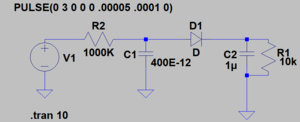Library Chair
Contents
Overview
The Library Chair is designed to make every library function more efficiently. The library chair design is based on a pressure sensor, which tells whether or not the particular chair is occupied, and then relays the information to a computer, which then compiles information from all of the library chairs. The computer then produces a map of the library and its chairs, and shows which chairs are currently unavailable. This way, each library attendee will know whether or not they will be able to find a seat in the library.
Team Members
Josh Zucker
Nick Blenko
Tom Howe
Objectives
Our project's main objective is to create an interface that library go-ers can use to see what seats in the library are available, and which are seated in. We want this product to be low energy, completely solar powered, and to be able to correctly determine if each library chair is occupied, or not.
We have a few minor objectives as well, that reflect our steps in creation. The first objective we are currently working on is how to finalize the circuit we want to use with the pressure sensor, to determine whether or not the library chair is occupied. The objective we have is to determine how we can get the library chair to communicate that it is occupied/unoccupied through radio waves to a processor. Following that, we are going to work on expanding our circuit to be able to operate entirely on solar power. Following that, we want to figure out a way for the processor to communicate the information to some sort of server. Once the server is set up, our next objective is to be able to develop an interactive interface for users attending the library can use.
Challenges
- Finding the best way to communicate information at a low energy level from our circuit in the chair to a processor
- Learning to use a Raspberry Pi to communicate information to a server
- Setting up a server
- Creating a user interface
Gantt Chart
Building the Circuit



